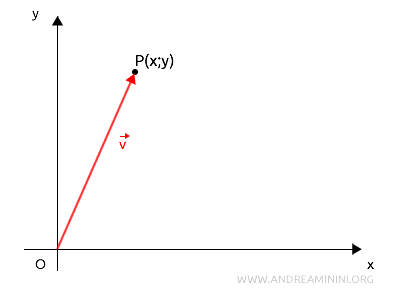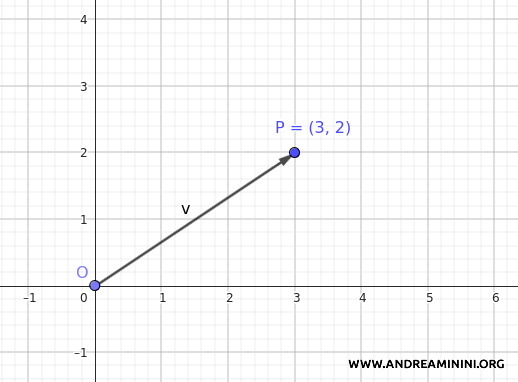One-to-One Mapping Between Vectors and Points in the Plane
Every point \( P \) in the plane, defined by its coordinates \( (x, y) \), can be uniquely associated with a vector \( \vec{v} = \begin{pmatrix} x \\ y \end{pmatrix} \). This vector, known as the position vector, originates from the origin \( O \) and terminates at \( P \). The reverse association also holds true.

In other words, there is a perfect one-to-one relationship between points in the plane \( P \) and vectors in the vector space \( \mathbb{R}^2 \).
This means that points in the plane and vectors in \( \mathbb{R}^2 \) can be seen as "two perspectives on the same concept": a point can be represented by a vector, and a vector specifies a unique point.
This correspondence depends on choosing an origin \( O \), which serves as the reference point for defining position vectors.
The mapping between points in the plane and vectors in \( \mathbb{R}^2 \) is one-to-one because:
- Each point in the plane corresponds to a unique position vector
Every point \( P(x, y) \) is represented by exactly one vector \( \vec{OP} = \begin{pmatrix} x \\ y \end{pmatrix} \). - Each vector corresponds to a unique point
Any vector \( \begin{pmatrix} x \\ y \end{pmatrix} \) corresponds to a single point \( P(x, y) \) in the plane.
Example
For example, if a point in the plane has coordinates \( P(3, 2) \), its corresponding vector is:
$$ \vec{OP} = \begin{pmatrix} 3 \\ 2 \end{pmatrix} $$
Conversely, given a vector \( \vec{v} = \begin{pmatrix} 3 \\ 2 \end{pmatrix} \), it can be associated with the point \( P(3, 2) \) in the plane.

And so on.
